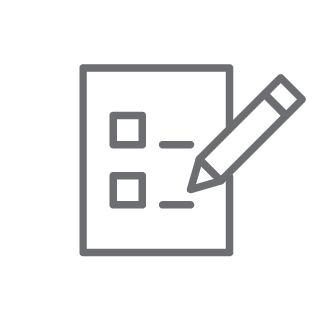


KLIENTA VAJADZĪBA: Lai labāk integrētu jaunos kolēģus, Gjensidige vadītāju komandai bija jāpielāgo līdzšinējais onboarding process izmantošanai digitālajā vidē.
WIN PARTNERS RISINĀJUMS: mācību programma vidējā līmeņa vadītājiem ar mērķi izvērtēt onboarding procesu no attālinātās komandas vadītāja un darbinieka perspektīvas, saprast abu iesaistīto pušu izaicinājumus un rast risinājumus pozitīvai darbinieku pieredzei, uzsākot darbu.
REZULTĀTS: 18 Gjensidige vadītāji adaptēja līdzšinējo Gjensidige jauno darbinieku integrēšanas programmu online formātam, papildus pielāgojot to savas struktūrvienības specifikai.
Kādu problēmu vēlējās atrisināt Gjensidige?
ADB “Gjensidige” ir Norvēģijas lielākās apdrošināšanas kompānijas meitas uzņēmums, kas Baltijas valstīs darbojas jau vairāk nekā 10 gadus. Trīs Baltijas valstīs uzņēmumā strādā 820 darbinieku.
2020. gadā, pārejot uz attālināto darbu, uzņēmums saskārās ar izaicinājumu: komandai regulāri pievienojās jauni darbinieki, taču to iekļaušanai komandā bija jānotiek distancēti. Līdz šim uzņēmumā tika veiksmīgi realizēta darbinieku onboarding programma klātienē, tāpēc uzņēmuma vadītājiem iepriekš nepieredzētā situācijā radās virkne jautājumu:
- kas jāņem vērā, pieņemot darba darbinieku, strādājot attālināti?
- kā ievadīt darbā jaunu darbinieku attālināti, bet nepazaudēt šī procesa kvalitāti?
- kā strādāt ar dažāda vecuma darbiniekiem un darbiniekiem ar atšķirīgām digitālajām prasmēm?
Klients nāca pie WIN partners ar vajadzību pēc mācībām, kas palīdzētu vidējā līmeņa vadītājiem adaptēt līdzšinējo jauno darbinieku integrēšanas programmu izmantošanai digitālajā vidē.
Kādu risinājumu piedāvājām un kā to realizējām?
Sadarbībā ar klientu tapa mācību programma, kuras mērķis bija caur dalībnieku aktīvu iesaisti un diskusijām iziet cauri onboarding procesam no vadītāja un darbinieka perspektīvas, atbildot uz šādiem jautājumiem:
- kas mainās un kas nemainās, salīdzinot ar līdzšinējo klātienes onboarding programmu?
- ko vēlas darbinieks, uzsākot darbu attālinātā komandā?
- kā nodrošināt četru līmeņu ievērošanu darbinieku integrācijā – “4C” jeb “APKA” – atbilstība, precizitāte, kultūra, attiecības?
- kā nodot kultūras, vērtību un neformālo uzvedības normas virtuāli?
- kā veicināt jaunā darbinieka piederību attālinātai komandai – vieta / darbības / emocijas?
Mācības notika 2021. gada aprīlī. Trenera Alda Zaula vadībā tajās piedalījās 18 vadītāji no Gjensidige, kuri bija sadalīti divās grupās. Katra grupa piedalījās divās mācību sesijās, 4 stundas katra. Viss mācību process noritēja attālināti.
Mācību rezultātā dalībnieki adaptēja līdzšinējo Gjensidige jauno darbinieku integrēšanas programmu online formātam, papildus pielāgojot to savas struktūrvienības specifikai.
Kā klients vērtē projekta rezultātu?
Kristīne Kalniņa, “Gjensidige” Personāla nodaļas vadītāja: “Par šīm onboarding mācībām no kolēģiem ir brīnišķīgi labas atsauksmes. Vadītāji ļoti slavēja, teica, ka viss bijis ļoti noderīgi, ieguvuši daudz labu padomu un saskatījuši iespējas! Mudināja visus pārējos kolēģus, lai noteikti piedalās, jo tiešām bijušas ļoti labas mācības! Paldies Aldim!”
Kādas ir WIN partners atziņas, noslēdzot šo projektu?
Aldis Zauls: “Ja attālinātais darbs uzņēmumiem bija gana pazīstams arī iepriekš, tad pandēmijas apstākļos saskārāmies ar to, ka arī atlases process, intervijas, darbā pieņemšana, līgumu slēgšana, pirmā darba diena, iepazīstināšana ar uzņēmumu un visa strādāšana jaunajam darbiniekam notiek neizejot no mājām. Šīs mācības parādīja, ka vadītājiem tas ir izaicinājums. Bet pamatnoteikums paliek nemainīgs – vispirms jāizveido attiecības ar jauno darbinieku, jāveicina viņa piederība komandai, un tikai tad cilvēks būs gatavs pilnvērtīgi strādāt pats. Protams, attālinātā formātā to izdarīt ir grūtāk, bet tas ir iespējams. Šīs programmas veiksmes pamatā ir mijiedarbība starp treneri, kurš iedod ietvaru diskusijai un risinājumu meklējumiem, un dalībniekiem, kuri piepilda šo rāmi ar savu pieredzi, problēmjautājumiem un kopīgi rastiem risinājumiem.”











